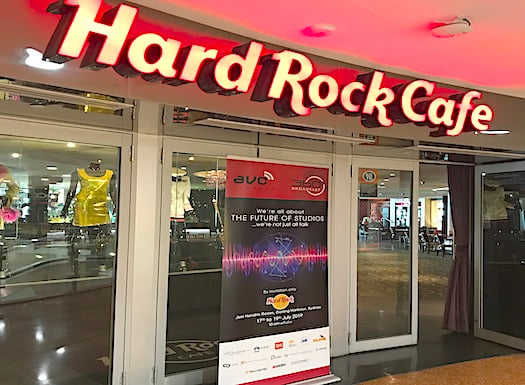This week at the Hard Rock Café, amidst the Rod Stewart jackets, Michal Jackson costumes, gold records and an autographed guitar from The Who, a group of far less flamboyant technical types sat around sipping coffee and talking to broadcasters about ‘the future of studios.’
The roadshow event was run by AVC.
Steve Ahern went along to share ideas with the experts about the essential elements for radio studios of the future.
It seems like studios of the future can go two ways.
 They may continue to be full of lights and buttons, giving the DJ a sense of flying a plane, just like Charlie Dore’s 1970s radio announcer anthem Pilot of the Airwaves…
They may continue to be full of lights and buttons, giving the DJ a sense of flying a plane, just like Charlie Dore’s 1970s radio announcer anthem Pilot of the Airwaves…
…or the lights and buttons will be pushed into the background, creating a comfortable lounge room atmosphere where presenters and guests can relax and play music or chat.
Our recent look inside the new SCA Audio HQ in Brisbane shows a combination of both ways of thinking.
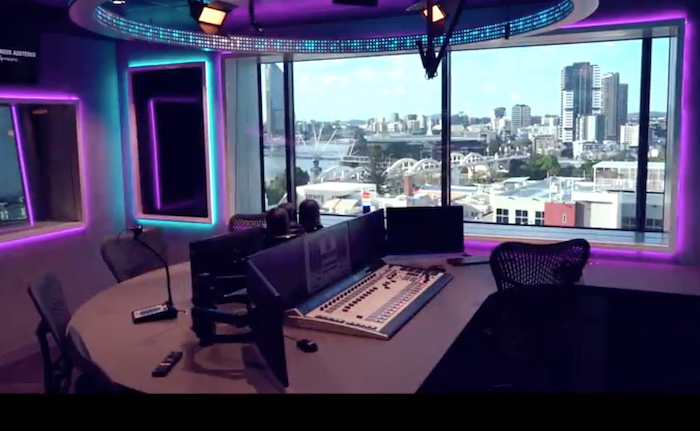
The studios are well equipped with mixing desk, lights and screens to create a ‘pilot of the airwaves’ atmosphere in a studio room with a view, while some other areas of the building such as the Sonic Boom Room are more about the comfortable furniture and creating a relaxed vibe.
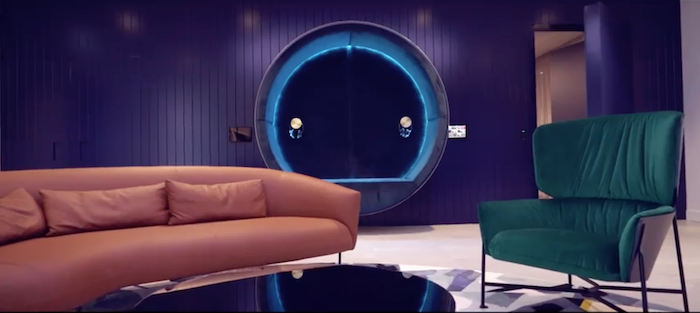
During a recent trip to Asia to prepare for Radiodays Asia, I saw two new studio constructions which also had interesting elements.
Lina, the GM of the newly refurbished Bectero Radio studios in Bangkok told me that the foyer of her new studios is designed to be impressive for the listeners who come in to collect prizes, so the racks of flashing lights and wires face outwards to the public area.
In addition, the public reception area is big enough to hold excited groups of fans who can drop in to take selfies with their favourite pop stars after they have been interviewed on air and listen to impromptu performances, like the one that was taking place while I was there.
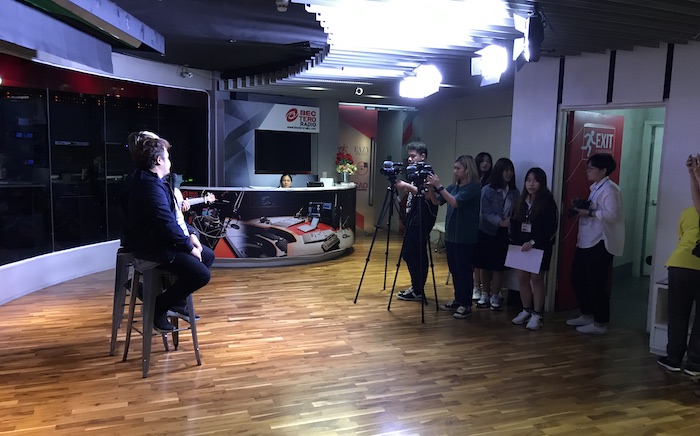
On that same trip I visited the new facilities of RRI Indonesia where Andi Permadi showed me a glass walled studio complex with groundbreaking integration or video and social media with live radio programs.
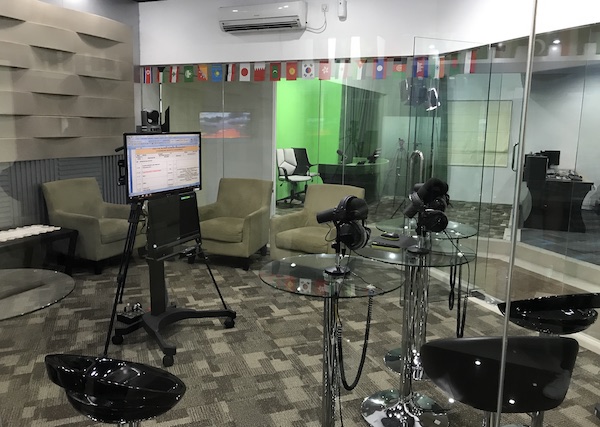
The breakfast show studio had three glass topped bar tables and high stools for the presenters to sit at, with a large playout monitor and lounge chairs being the only other things in the studio. Behind the on air studio was a digital newsroom and a control room where videos, social media, phones and other sources were fed into the presenters during the show.
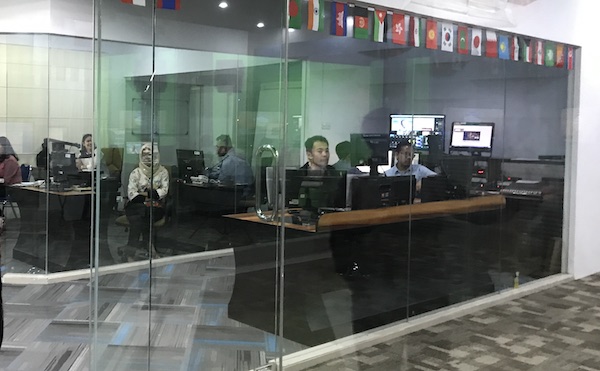
To enable these new ways of thinking, equipment providers have been adapting their products. Some of these were on display at the Hard Rock Café this week.
Wide Orbit’s playout system is a case in point. You can still use the studio monitor version in a traditional studio environment, or you can use a remote app version to control the playout if you are in a less traditional studio configuration.
Putting callers to air is no longer just about switching a telephone to a fader, now listeners interact via many channels – phones, whatsapp, skype, video messages and social media posts. Producers need an integrated system that can ingest all those sources and present them to the program host via one interface.
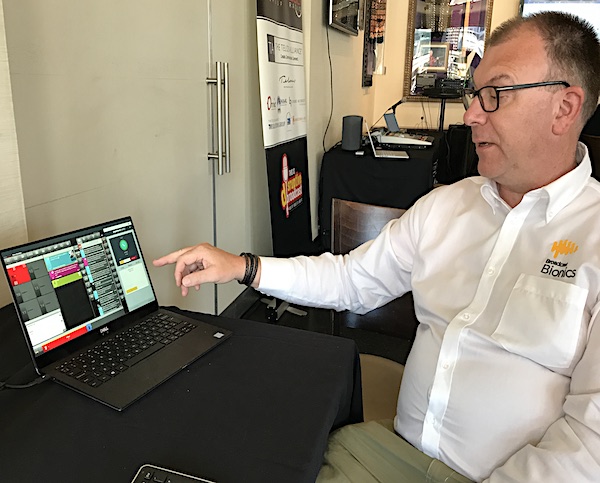
The latest version of PhoneBox from Broadcast Bionics, now called Bionic Talkshow to reflect the new functionality, is one solution for this new multi source audience interaction environment.
Broadcast Bionics general manager Duncan Smith demonstrated the features of Bionic Talkshow, including showing how guest contributors can be given a link to call in from their browsers or phones and be integrated into the other external inputs through the system.
The new system also incorporates audio and video archiving and speech to text editing, as Greg Altena demonstrated.
Caller One is a lighter, browser based version of PhoneBox, designed for more simple installations such as community stations or podcasters.
Switching, monitoring and intercom systems were also on display at the AVC demo room, extending IP control to all areas of the production and transmission chain for studios of the future.
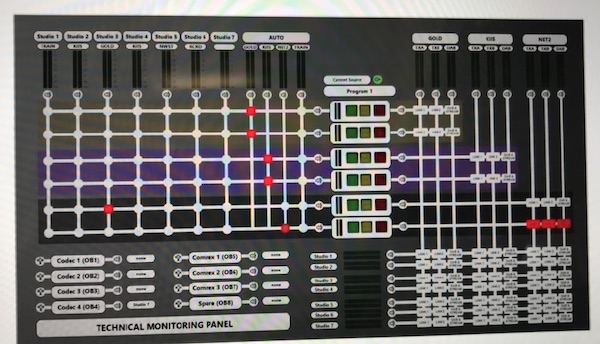
Do you have some thoughts on future studio design? Have you done something innovative in your new studios? If so, tell us about it below by posting a comment, or send information to [email protected], we always love to learn about new trends and share new thinking with others in the industry.
Related reports:
360 degree mics, drones and podcasters on display at SMPTE’s METexpo
Changing news workflows: Journos are working from small bureaux or home offices

